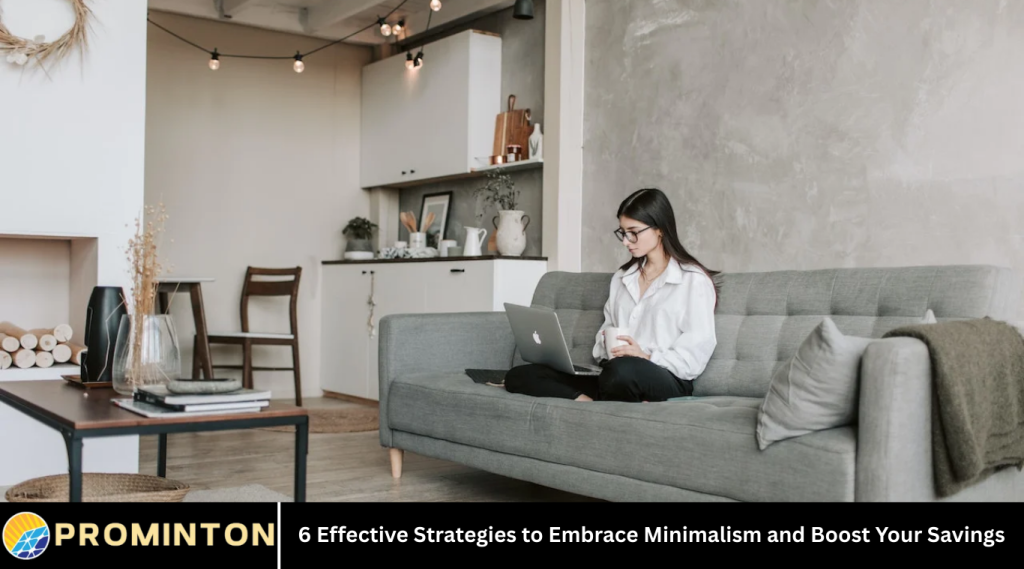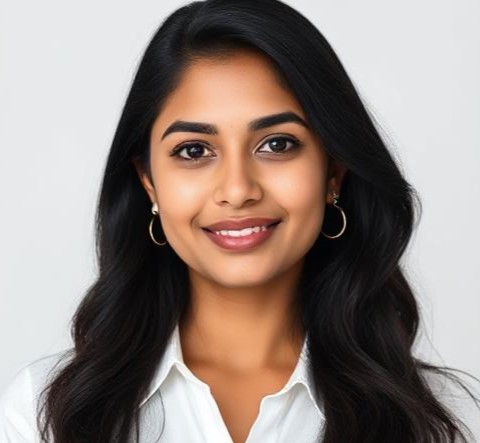Minimalism is more than just a trend or aesthetic—it’s a mindset. At its core, minimalism is about reducing clutter, focusing on what matters most, and making intentional choices in life. One of the biggest benefits of minimalism is that it can lead to significant financial savings.
When you spend less on unnecessary things, maintain what you already have, and focus on what truly adds value to your life, your bank balance often reflects those choices. In this article, we’ll explore six strategies to adopt a minimalist lifestyle and show you how these choices can help you save money, reduce stress, and live more intentionally
What Does Minimalism Mean in Practice?
Before diving into strategies, it helps to clarify what minimalism means in everyday life.
Minimalism doesn’t mean living with nothing or deprivation. It means:
- Being intentional with what you own and buy
- Prioritizing quality over quantity
- Letting go of items that no longer serve you
- Reducing recurring costs and simplifying your financial life
- Focusing on experiences, relationships, and well-being rather than possessions
With that foundation, adopting minimalism can help free up money, reduce waste, and give you more financial clarity.
Declutter and Sell What You Don’t Use
One of the first steps toward minimalism is decluttering your space. Every item you own has costs—financial, emotional, and often physical (maintenance, cleaning, storage). Getting rid of what you don’t need brings many benefits.
How to Do It
- Go room by room. Start small (a drawer, a shelf) so it doesn’t feel overwhelming.
- Ask yourself questions: When was the last time you used this? Does it add value to your life? Do you keep it for emotional reasons?
- Sort items into categories: Keep, donate/sell, recycle/trash.
- Sell things you no longer want: Use online marketplaces (e.g. local apps, Facebook Marketplace, Vinted, etc.), consignment stores, or hold a garage sale. This brings in extra cash.
How It Saves You Money
- You avoid buying duplicate items because you see what you already have.
- Less stuff means less maintenance, repair, storage or cleaning costs.
- The money you make by selling unused things can go toward your savings or paying down debt.
Adopt Intentional Buying and Mindful Spending
Once you declutter, the next barrier is preventing new clutter from sneaking in. Intentional buying and mindful spending mean being deliberate about what you bring into your life.
How to Do It
- Pause before purchasing. If you feel an urge to buy something non-essential, wait for some time (24 hours to a week). That can reduce impulse buys.
- Create a “needs vs wants” list. Before spending, assess whether something is essential.
- Set budgets for categories. For example: clothing, entertainment, gadgets. Stick to those budgets.
- Do research: Compare prices, check reviews, consider durability and cost per use. Quality products that last tend to cost more up front but save money long term.
How It Saves You Money
- Avoids wasted spending on items that don’t last or aren’t needed.
- Reduces debt from impulse purchases or credit use.
- Helps money go further because each purchase gets more intentional value.
Cut or Eliminate Unnecessary Recurring Costs
Recurring expenses—subscriptions, memberships, utilities, maintenance—can quietly eat at your finances without you fully realizing it. Minimalism helps you become aware of and trim these costs.
How to Do It
- Review all your subscriptions/memberships. Which do you rarely use? Which do you actually need? Cancel or pause those that don’t serve a strong purpose.
- Downsize or optimize your living situation. A smaller apartment or house means less rent/mortgage, lower utilities, lower maintenance.
- Use energy-efficient appliances and habits. Reduce electricity, water usage, heating/cooling bills.
- Simplify finances. Fewer credit cards, fewer bank accounts, consolidating bills where possible reduces fees and mental load.
How It Saves You Money
- Eliminates hidden drain on finances (unused subscriptions, extra spaces).
- Reduces fixed monthly bills.
- Frees up funds for savings or investment.
Prioritize Quality Over Quantity
Minimalist lifestyles emphasize getting fewer things, but getting better things—items that serve longer and bring more value.
How to Do It
- When buying something, look for durability, good materials, good craftsmanship.
- Consider secondhand or refurbished items—they often cost less but with good quality.
- Choose multi-use items. For example, clothes that mix-and-match well; furniture that can serve more than one function.
- Take care of what you own—maintenance, proper storage, cleaning increases lifespan.
How It Saves You Money
- Fewer replacements and lower repair costs over time.
- Less waste and fewer purchases overall.
- Maybe higher upfront cost, but more cost-effective over lifespan.
Simplify Your Living Space and Lifestyle
Minimalism often involves simplifying not just possessions but how you live. Reducing complexity in your environment and habits tends to reduce spending.
How to Do It
- Live in smaller or more efficient spaces. If possible, downsize or use only what you need.
- Cut down commute cost and transport expenses. Use public transport, carpool, bike. Less reliance on multiple vehicles.
- Reduce consumption. For instance, fewer gadgets, less decor, simpler wardrobes.
- Focus on free or low-cost leisure. Nature walks, parks, free community events, home-based hobbies.
How It Saves You Money
- Lower rent, utility, and upkeep costs.
- Less money spent on styling, maintaining, and replacing decorative / luxury / non-essential items.
Automate & Reinforce Good Financial Habits
To make minimalist habits stick, you need systems that reinforce them. Habits are easier to maintain when they happen automatically or almost without thought.
How to Do It
- Automate savings: set up automatic transfers to savings or investment accounts. When money is moved before you see it, you’re less tempted to spend.
- Automate bill payments to avoid late fees or extra charges.
- Track your expenses and budget regularly. Use an app or spreadsheet to see where your money is going. Minimalism gives clarity which helps you catch wasteful spending.
- Review periodically. Monthly or quarterly check-ins to see what’s working, what isn’t, and adjust.
How It Saves You Money
- Prevents late fees, penalties.
- Helps you stick to budgets so you don’t overspend.
- Ensures you redirect funds saved into long-term goals.
Real-Life Examples & Benefits
Here are some concrete ways minimalism has helped people save money:
- By selling unused things from the home, people often get unexpected cash to pay off debt or build an emergency fund.
- Downsizing living space reduces rent/mortgage, utility bills, maintenance.
- Unused subscription cancellation (streaming services, gym memberships) frees up monthly cash flow.
- Less frequent shopping (clothing, decor) and choosing quality items that last lead to fewer purchases over time.
Challenges You Might Face & How to Overcome Them
Adopting a minimalist lifestyle isn’t always easy. You may face psychological, social, or practical hurdles.
- Sentimental attachment: Letting go of items with emotional value is hard. Solutions: take photos, keep just one meaningful item, or give away with love.
- Peer pressure & consumer culture: Ads, trends, social media push materialism. Combat this by clarifying your values, limiting media exposure, following minimalist voices.
- Fear of missing out (FOMO): Remind yourself what you value—experiences, freedom, peace rather than items.
- Habit rollback: Old behaviors creep in. Use review routines, accountability partners, systems (e.g. lists, automations) to stay on course.
Why Minimalism Matters Beyond Money
- Stress reduction: Less clutter and simplicity often mean less decision fatigue and mental load. Clear space = clearer mind.
- Environmental benefits: Consuming less and maintaining what you have reduces waste, packaging, carbon footprint.
- More freedom and time: Less time spent cleaning, caring, managing stuff; more time for things you care about—relationships, growth, experiences.
- Financial security & peace of mind: With fewer financial obligations, less debt, more clarity, you can build savings and feel more stable.
Frequently Asked Questions
Is minimalism only for people with low income?
No. Minimalism is a mindset accessible to anyone. Even people with higher incomes benefit by spending more intentionally, avoiding waste, and investing more in experiences, relationships, or purpose. It’s less about how much you earn, more about how you use what you have.
Will minimalism limit my enjoyment of life—no more new things or fun?
Not at all. Minimalism isn’t about deprivation—it’s about making choices that matter. It frees you to spend on things you deeply care about. New things can still be part of your life, but with more thought, value, and less waste.
How do I know what’s “necessary” vs “non-essential”?
It helps to ask yourself questions like:
- Will I use this more than once or often?
- Does it serve a practical purpose or bring genuine joy?
- Do I already have something that does the job?
- Is this purchase aligned with my longer-term goals or values?
What if I’m emotionally attached to many of my things?
That’s common. Strategies that help: take photos as keepsakes; keep just one item that holds strong meaning; gradually let go rather than all at once; donate to causes you believe in to give items a new purpose.
How do I avoid impulses or peer pressure to buy?
Use these tactics:
- Remove shopping apps or unsubscribe from marketing emails.
- Wait before buying non-essential things (24 hours or more).
- Surround yourself with minimalist or intentional-living content.
- Remind yourself of your goals—financial, lifestyle, or otherwise.
How long until I start seeing financial benefits?
You can start seeing small savings immediately—selling unused items, cancelling subscriptions. Bigger changes (downsizing, automating savings) may take weeks or months. It depends on how many changes you make and your starting point. Even modest, consistent steps add up over time.
Can minimalism help me build emergency funds or invest?
Definitely. By cutting unnecessary expenses and redirecting that money, you can build or bolster an emergency fund, pay off debt, and begin investing or saving for long-term goals. Minimalism helps free up money to use in ways that support financial security and growth.
Conclusion
Embracing minimalism is not about having less out of necessity—it’s about making space for what counts. It’s about intentionality: owning less, spending less, and directing your resources—time, energy, money—toward what truly enriches your life.
By applying the six strategies above—decluttering, mindful spending, cutting recurring costs, prioritizing quality, simplifying your lifestyle, and automating good habits—you can not only boost your savings but also reduce stress, improve clarity, and live more aligned with your values.
Start small. Pick one strategy that speaks to you, try it out this week, then build from there. Over time, you’ll likely find yourself not only saving money—but finding more joy in simplicity and focus in what matters.



